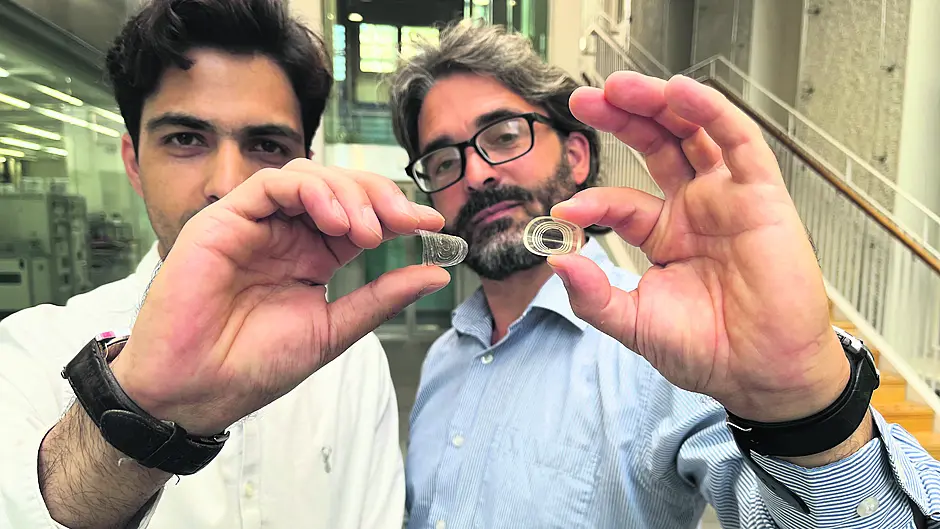Researchers in Cork are developing wireless tracking technology which they believe will be rolled out on farms in the near future and help secure the future of the Irish dairy industry
IT’S not quite cows wearing Fitbits or fitness trackers, but it’s not far off.
A glimpse of the future of farming in West Cork has been revealed, with cows wearing tracking technology and relaying health information back to farmers’ mobile phones.
And the new technology could be rolled out on farms in West Cork in one to three years, a spokesman for the developers said.
The Tyndall National Institute in Cork hosts the VistaMilk SFI Research Centre, which has developed a unique way of transmitting health and welfare information from cows to mobile devices or computers, using electronics-free material.
The new material is so inert and flexible that it could be formed into ear tags, udder tags, or skin patches, as curvature does not affect its ability to function. These devices could ‘read’ the animal for stress, hydration, and general well-being, and present the data for collection.
The key to the functioning of the technology is the ability to interpret the data that is being gathered from the patch or tag by special scanners (like retail barcode scanners) which, in the case of cows, would be situated in milking parlours or cowsheds. This process is achieved with the use of AI models (trained on data collected by state-of-the-art robots) which enable accurate decoding of the data collected.
Dr Brendan O’Flynn, VistaMilk principal investigator and research leader at Tyndall, believes that the potential and the benefits of the chipless, wireless transmission system are vast.
‘We’ve got an inert, chipless, batteryless, flexible transmitter – and no electronics means no electronic waste, lower cost, and easier production – and we’ve got sophisticated machine learning programmes to interpret the data,’ said Brendan.
‘At the moment, we’re able to gather information about animal welfare and well-being. In the future, we should be able to gather information about specific diseases and conditions. The antennas – or transmitters – could be wearable patches, or bracelets, that might enable the same monitoring of health data in humans.’
VistaMilk’s aim is to ‘digitalise dairy’, says Donagh Berry, VistaMilk SFI Research Centre director.
‘This new tech takes us further down the road to a data-driven Irish dairy sector. This development, and others like it, will allow for a more efficient and productive system that acknowledges and addresses the global climate challenge.
‘Dairying has been taking place in Ireland for 6,000 years.
‘It employs 60,000 people, sustains 17,500 family farms and delivers €6.8bn to the economy each year. It’s initiatives like this, helping us be more efficient and more productive, while mitigating environmental impact, that will secure the future of the dairy sector.’
Representatives of the VistaMilk SFI Research team were in Laois last week for the National Ploughing Championships as part of the AgNav technology programme. They presented a 3D cow model, accessorised with sensors, to demonstrate digitalisation in the dairy industry.
A VistaMilk spokesman said they are open to investment. ‘Any technology like this needs to translate into real world opportunity, so there’s always a desire for investment.’
He said the animal monitoring technology is another example of ‘world-leading’ agri-tech coming out of Ireland.
‘Ireland is already a centre of excellence for agritech, particularly in the area of environmental sustainability in dairy, which is obviously a national issue of great importance.
‘The technology being developed today will help secure the future of the dairy industry in Ireland.’







